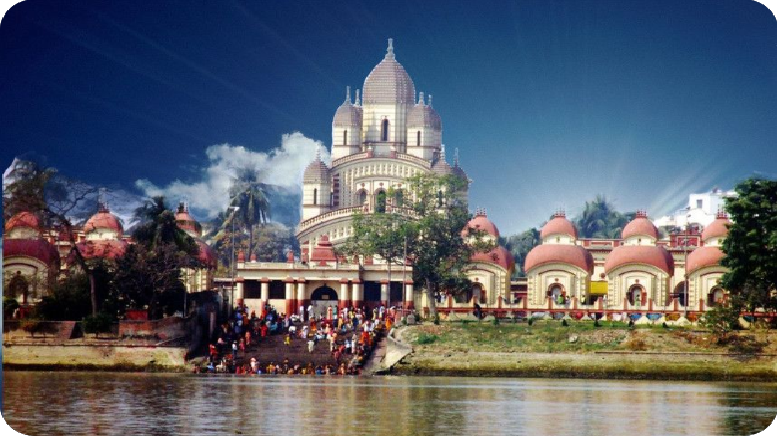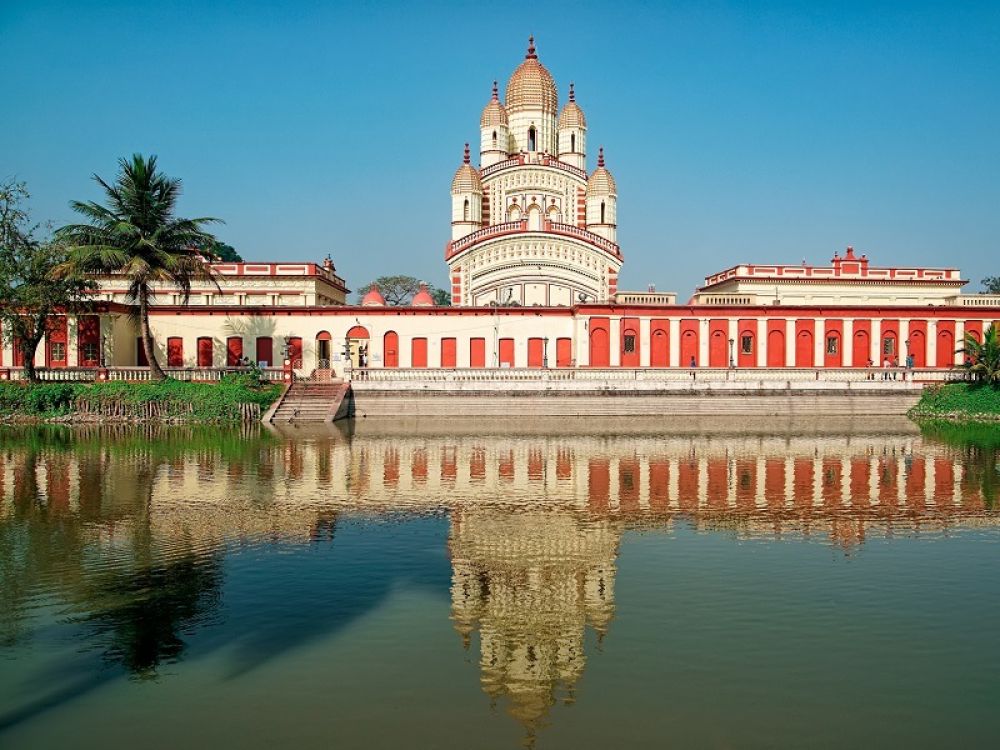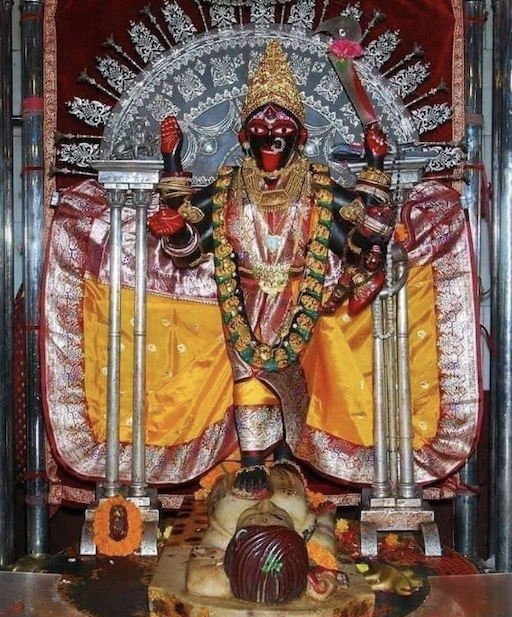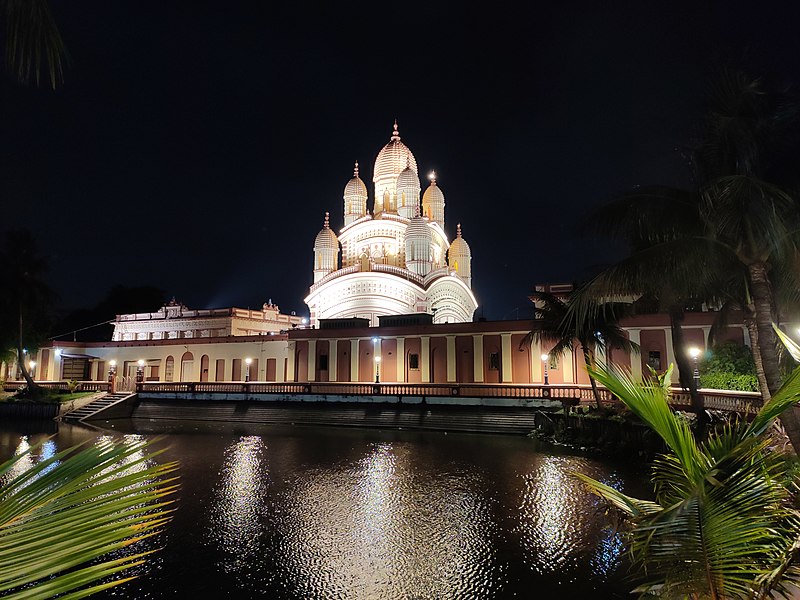
Table of Contents
Dakshineswar Kali Temple
Nestled on the banks of the Hooghly River in Kolkata, India, the Dakshineswar Kali Temple is not just a significant religious site but a sanctuary of peace and spirituality. It’s a place where devotion meets history, where pilgrims and tourists alike come to experience a unique blend of spiritual energy and architectural grandeur. This temple, dedicated to Goddess Kali, has long been a center of attraction for millions of devotees and spiritual seekers. But its significance goes beyond just religious practices—it holds a deep connection to one of India’s most revered saints, Sri Ramakrishna Paramahamsa.
In this blog, we will explore the history, architecture, spiritual essence, and the profound influence of Dakshineswar Kali Temple. Whether you’re a devotee of Kali Ma, a history enthusiast, or someone who just loves to explore the rich culture of India, this temple promises to offer something extraordinary.
A Brief History of Dakshineswar Kali Temple
The Dakshineswar Kali Temple was established in 1855, with its consecration occurring in the same year. It was the vision of Rani Rashmoni, a wealthy and noble woman who lived during the British colonial era. She was a devout follower of Goddess Kali and had a deep connection with the divine. Rashmoni, moved by her devotion, decided to build a temple dedicated to Kali in Dakshineswar, a village located on the banks of the Hooghly River. She did this not just out of religious zeal but also to offer the people a place of worship that would serve them for generations to come.
Interestingly, the temple’s construction was funded by Rani Rashmoni’s fortune, and it was completed under the supervision of the well-known architect, Rajendralal Mitra. The temple was intended to be a grand edifice for worshiping the goddess and was positioned strategically on the banks of the river to enhance its spiritual significance.
What makes this temple even more special is that it is closely associated with the life and teachings of Sri Ramakrishna Paramahamsa. The famous saint spent a significant part of his life here, and it was here that he had deep spiritual experiences and divine revelations. His influence has made Dakshineswar Kali Temple not only a place of worship but also a center for philosophical learning and spiritual enlightenment.
Architectural Beauty of Dakshineswar Kali Temple
One of the key reasons why Dakshineswar Kali Temple stands out is its architectural beauty. The temple is designed in a typical Bengali style, which reflects the artistic and cultural heritage of the region. The temple complex consists of several buildings, the most prominent being the main temple dedicated to Goddess Kali.
The main temple is a towering structure with a distinct, ornate spire that stands high against the Kolkata skyline. The temple is built on a raised platform, and visitors must climb a series of steps to reach the sanctum. The architecture is inspired by a fusion of traditional Hindu temple designs and modern elements, giving it a unique visual appeal. The temple’s structure includes intricate carvings, detailed sculptures, and elegant paintings that reflect the stories of the goddess Kali.

In addition to the main temple, the Dakshineswar Kali Temple complex also features a series of 12 small shrines, each dedicated to different gods and goddesses from the Hindu pantheon. These shrines line the outer courtyard of the temple and are situated symmetrically around the main temple, creating a harmonious and visually striking layout. The presence of these shrines adds to the spiritual energy of the place, and devotees often visit these smaller temples to offer their prayers.
Another noteworthy feature of the Dakshineswar Kali Temple is its long and serene riverfront, with the temple facing the Hooghly River. The setting of the temple along the riverbank not only adds to its scenic beauty but also enhances the temple’s spiritual atmosphere. The peaceful flow of the river, combined with the sight of the temple’s majestic structure, creates a divine and meditative environment for devotees.
Spiritual Significance of Dakshineswar Kali Temple
Dakshineswar Kali Temple holds immense spiritual significance for Hindus, particularly those who worship Goddess Kali. Kali is the goddess of destruction and transformation, symbolizing the destruction of evil and the birth of new beginnings. She is often depicted as a fierce and powerful deity, with a tongue sticking out and a garland of skulls around her neck. While her image may seem intimidating to some, Kali is also revered as a loving mother who protects her devotees from harm.
For many, Dakshineswar Kali Temple is not just a place to worship; it is a transformative spiritual experience. The temple’s ambiance encourages deep meditation and introspection, as it is believed that Kali Ma herself resides here, showering her devotees with divine blessings. The temple is a place where people come to seek solace, offer prayers, and connect with the goddess on a deeply personal level.
Sri Ramakrishna Paramahamsa, who spent a large part of his life at Dakshineswar, often meditated here and had profound spiritual visions of the goddess. It is said that Ramakrishna would immerse himself in ecstatic states of devotion, experiencing the divine presence of Kali in the temple. His spiritual practices, including his deep devotion to Kali, inspired countless followers and made Dakshineswar a center for spiritual learning. Today, the temple is not only a place of religious worship but also a hub for spiritual seekers looking for guidance and enlightenment.
Sri Ramakrishna Paramahamsa and Dakshineswar
Sri Ramakrishna Paramahamsa’s connection with Dakshineswar Kali Temple adds a layer of historical and spiritual depth to the place. Born in 1836, Ramakrishna was a man of intense spiritual experiences. He came to Dakshineswar in 1855, at the age of 19, and soon became a devotee of Kali Ma. His intense devotion to the goddess and his pursuit of divine knowledge were evident in his life, and Dakshineswar was the place where he spent much of his time meditating, praying, and engaging in spiritual practices.
Ramakrishna’s experiences in the temple were profound. He is said to have had a direct, personal connection with Kali Ma, experiencing her divine presence in vivid visions. His devotion to Kali was so deep that he would often lose himself in ecstatic states, demonstrating the power of faith and surrender. Many of his teachings were shaped by his experiences at Dakshineswar, and he often spoke of his visions of Kali as a source of spiritual insight.
Sri Ramakrishna’s disciples, including Swami Vivekananda, would also come to Dakshineswar to learn from their master. The teachings of Ramakrishna Paramahamsa, emphasizing love, devotion, and universal harmony, continue to inspire millions worldwide, and Dakshineswar remains a pilgrimage destination for those who seek spiritual wisdom.

Visiting Dakshineswar Kali Temple: What to Expect
When you visit Dakshineswar Kali Temple, expect to be greeted by a serene and peaceful atmosphere that encourages introspection and devotion. The temple is open throughout the year, and people from all over the world come here to offer prayers, perform rituals, and seek spiritual guidance.
The main temple is the focal point of the complex, where devotees gather to pay homage to Goddess Kali. You can offer flowers, light incense, or simply sit in silence, reflecting on the divine energy around you. The temple also hosts daily aarti (prayer rituals) that are attended by large groups of devotees. These aartis are vibrant, energetic, and highly spiritual experiences that connect the community of worshippers in a collective expression of devotion.
Apart from the main temple, visitors can also explore the various smaller shrines located in the temple complex. These shrines are dedicated to different deities and are often quieter than the main temple, allowing for moments of personal prayer and meditation. Many people also visit the banks of the Hooghly River to sit by the water, meditate, or simply enjoy the tranquility of the surroundings.
If you’re interested in the life and teachings of Sri Ramakrishna, you can visit the room where he spent a considerable part of his life. This room is preserved as part of the temple complex, and it provides visitors with a deeper understanding of his spiritual practices and the profound experiences he had at Dakshineswar.
Conclusion: A Sacred Space for Spiritual Growth
The Dakshineswar Kali Temple is much more than just a place of worship. It is a beacon of spiritual light, offering a space for reflection, devotion, and personal transformation. The temple’s rich history, stunning architecture, and profound connection to Sri Ramakrishna Paramahamsa make it one of the most significant religious sites in India. Whether you’re visiting to seek blessings, explore the spiritual teachings of Ramakrishna, or simply immerse yourself in the peaceful atmosphere of the temple, Dakshineswar Kali Temple promises to offer a unique and enriching experience.

